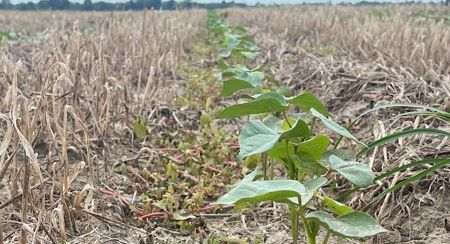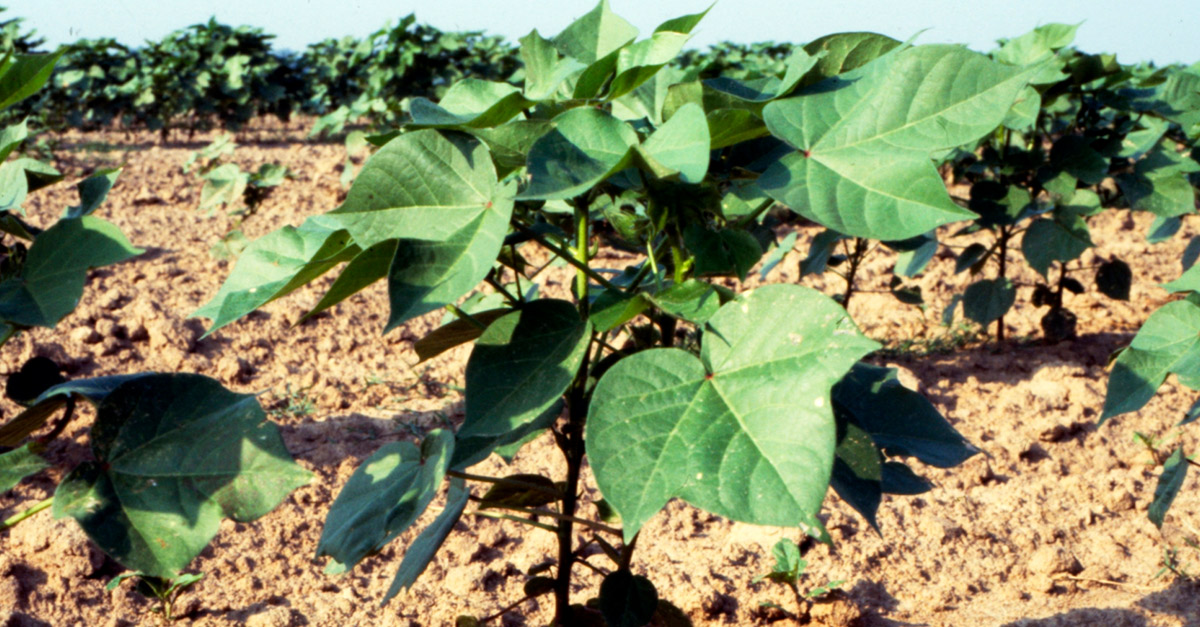Crop Scan Ag Report: Weeds, Bugs, Wind and Hail
Weed and insect pressure is starting to build across the Cotton Belt, but Mother Nature has been the biggest pest in some areas over the past week. Despite those challenges, our contributing cotton consultants say the overall crop is in pretty good shape. Here’s their report for late June.
Wes Briggs consults on cotton, corn, peanuts, soybeans, and small grains for growers in Georgia, Alabama, and Florida.
You work hard and think you have a pretty good plan laid out, then all “hail” breaks loose. We have some hail damage in cotton, peanuts, corn and sweet corn. I’ve seen hail damage all the way from Greenville, MS to Bainbridge, GA. That means some extra work to help growers document for insurance purposes – just some added work and stress to an already stressful year.
We had anywhere from 2-6 inches of rain, and some areas north of us had over a foot of rain. We needed rain, but we didn’t need the wind and hail. There were 50-60 mph winds associated with some of the storms.
We have a couple hundred acres of sweet corn flat on the ground. Most of that was timed for the July 4 market, and you hate to see those growers lose those acres. Those markets are as good as they’ve been for several years.
I’m not sure yet how much hail damage we have in our corn and cotton. Peanuts should recover. All of our corn was pollinated, but as long as we have enough leaf structure left we can try to finish filling it out. I’ve seen some pictures of cotton fields around our area where the leaves have just been stripped. Most of those fields will probably be planted back to soybeans.
(Check out these photos from Wes Briggs)
 Young cotton stand June 11
Young cotton stand June 11
 Same field June 16
Same field June 16
We have really good-looking cotton, and we have some ugly cotton. Our cotton ranges from first week of bloom in our oldest fields to still in the cotyledon stage in others. We would have planted a little more cotton, but the weather caught us on the tail end and some fields were switched to soybeans. Based on what I can see and what’s traditionally planted in this area, it looks like cotton acres are down about 25%.
We’re seeing a lot of adult tarnished plant bugs in isolated spots, depending on the age of the cotton. We also have a lot of aphids, and we were seeing spider mites before we started getting rain. It was really dry.
Overall, the cotton looks good. Right now, the focus is on plant bugs, aphids, weed control, and fertilizer. Some of the cotton that didn’t get damaged is squaring on nodes 5, 6, and 7.
Chad Harrell owns and operates Harrell Agronomic Services in Northeastern North Carolina.
Cotton is finally starting to grow-off in our region. The crop has been significantly delayed this year due to lack of heat units and intense thrips pressure the past few weeks. To add to that, we have experienced less than acceptable thrips control with acephate, leading to our first confirmed resistance in northeastern North Carolina.
We are finally out of the woods this week, and the cotton is putting on better leaves. We should see some squares within the next week on the earliest planted cotton.
I would estimate that the cotton crop is about three weeks behind schedule. We are also running out of moisture fast in most areas and hope to see some rain this week.
Tucker Miller is a Mississippi-based independent private consultant for cotton, soybeans, corn, peanuts, rice, and vegetables.
Our cotton ranges in age from 11 nodes down to four true leaves. The older cotton is fruiting nicely. The node of first fruiting branch is 5 and 6, depending on variety.
We have applied our first weed control apps and are in pretty good shape. We have a few acres that have been wet and will need a pigweed application when it dries up. We received beneficial rainfall this past week and luckily missed the wind and hail that was south of us.
Our major pest, the tarnished plant bug, is increasing now, and we are scheduling insect measures for them. Our growers are plowing middles for furrow irrigation and applying fertilizer with the plows covering it. We will be watching for the plant bugs to increase as the late cotton begins to square.
Our corn is tasseled, and we are watering where rainfall has been light. Our soybeans are at R3-R4, and we are applying fungicides. Insects are low, and we’re not adding insecticides at this time.
Mark Nemec is an independent agricultural consultant for cotton, wheat, grain sorghum and corn in the Blacklands and Brazos River Bottom area of Central Texas.
Things in Central Texas are fast and furious. We’ve dried up and warmed up. Now we’re trying to play catch up.
The crop has turned around greatly from the cool, wet start we had going into the season. With all the heat units we are getting, cotton is now starting to load up with fruit as temperatures are approaching 100 degrees as of June 15. We’ll probably see some blooms soon on the earliest cotton, but this is still later than normal.
With the hot weather we’re having, our pastures, roadsides, and other areas are drying down. This is causing a massive fleahopper migration. We’re throwing everything, including the kitchen sink, at them. We’ve been able to kill what’s coming in, but the migration is relentless. I’m hoping we get past this soon and can catch a breath or two.
We’re beginning to apply some PGRs in some areas. We’re also still battling weed pressure, but we’re finally getting a good handle on it. Growers here are hoping to get caught up before corn harvest starts in about a month.
Kerry Siders is Texas A&M AgriLife Extension Agent-IPM for Hockley, Cochran, and Lamb Counties.
As is always the case this time of season, our cotton crop is all over the board, from just planted to the small percentage of cotton acres on the other end of the spectrum which are near squaring and making good progress. However, it is the majority in between which is of most concern.
I suspect the most recently planted (both original planting and replant acres) will jump out of the ground and take off running quickly and could even outpace those acres planted two to three weeks earlier. These acres have struggled from stresses from wind, blowing sand, and hard driving rain, but mostly cool air temperatures. So, stand establishment and evaluation are still a top priority along with weed management.
Here are my priorities from mid-June through mid-July:
- Fertility – Where are you in terms of reaching your realistic yield goal? Adjust accordingly and get it implemented soon.
- Irrigation – Most plants are rooted down into good moisture or will be soon. Right now, we have stored moisture for a few weeks or possibly more. As we go into bloom and boll development, be sure to account for the water demand curve.
- Weed Control – I would encourage producers to utilize glufosinate (Liberty) while we have moisture and some humidity to take some selection pressure off the Xtend and Enlist technology herbicides. I would encourage residual herbicide as well.
- Plant Map – What is the plant telling you? Will it need a plant growth regulator with good moisture, heat, and fertility?
- Insect Scouting – Never let your guard down! Watch for thrips on late planted acres, wireworms, Lygus, and fleahoppers.















